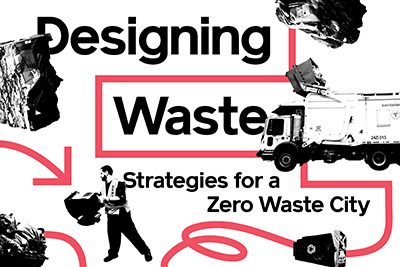
- This event has passed.
Dining Detritus: Zero Waste Restaurants
July 12, 2018 @ 6:00 pm - 8:00 pm
Free
This is a related program for the exhibition Designing Waste: Strategies for a Zero Waste City.
Can design help restaurants and food service facilities go zero waste? In the third and final program related to the Designing Waste exhibition, currently on view in the Center for Architecture galleries, a chef, a proprietor, and a sustainability expert present and discuss the design interventions that have helped them reduce food waste, improve recycling, and move towards a circular economy.
Introduction:
Christina Grace, CEO and Founder, Foodprint Group; Co-author of the Zero Waste Design Guidelines
Speakers:
Camilla Marcus, Founder, west~bourne
Elizabeth Meltz, Director of Health, Safety, and Environment, Eataly
Kelly Jacques, Operations Manager, Breads Bakery
Moderator:
Andrew Blum, Curator, Designing Waste
Designing Waste: Strategies for a Zero Waste City explores how we manage waste in our buildings and neighborhoods, and how design can help reduce the amount of waste that goes to landfill.
Every day, tens of thousands of trucks filled with food, clothing, and other goods arrive in New York City to be delivered, unpacked, and consumed. And every day, approximately 24,000 tons of discarded materials leave the city as waste. Waste management costs New York City over a billion dollars every year. To combat this problem, the city announced a Zero Waste plan in 2014 to reduce the amount of discards sent to landfills by 90% by 2030.
Designing Waste examines the architecture of New York City’s gray spaces for trash—the overlooked areas where waste is managed in our buildings. This is when waste is closest to us, when it’s sorted and stored in apartments, trash rooms, basement corridors, loading bays, and sidewalks. And this is where architects, designers, and building professionals have agency to transform the waste system.
The exhibition is based on the Zero Waste Design Guidelines, an expansive document that examines architectural strategies for waste reduction.
#DesigningWaste